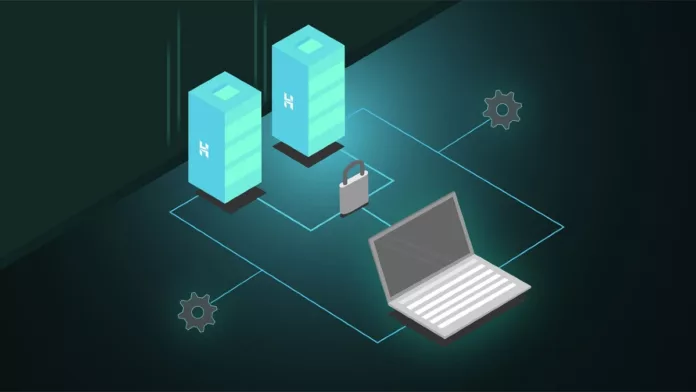In the ever-evolving landscape of digital investigations, comprehending server error codes is an indispensable skill for cybercrime investigators. These cryptic numerical messages are key to understanding the intricate interactions between clients and servers, offering crucial insights into potential security breaches and illicit activities. This article, “Navigating Server Error Codes: Essential Knowledge for Cybercrime Investigators,” serves as a helpful guide, shedding light on the significance of these codes, unraveling their meanings, and equipping investigators with the expertise necessary to navigate the intricate web of digital forensics. Delving into the nuanced realm of server responses, this discourse endeavors to empower investigators with the requisite knowledge to discern, interpret, and leverage these critical indicators in their pursuit of cybercrime detection and mitigation.
This information may be helpful for investigators who are looking into cybercrime, online fraud, and corporate espionage.
What is a Server Error Code?
Private investigators who conduct computer forensic investigations should be able to understand and interpret these types of codes during an investigation case. The following information will help serve as a reference for decoding the information.
When a web browser requests a service from a web server, there is always a possibility that an error might occur. When an error does occur, the webserver returns a response in the form of a Hypertext Transfer Protocol (HTTP) Status Code to the user. These status codes are commonly known as server error codes. Server error codes are standard and will appear regardless of the web browser (e.g., Google Chrome, Internet Explorer, Safari, etc.).
What are the Codes used for?
The purpose of the codes is to help identify the problem when a web page or web page element does not load properly. The problem could originate on the server itself, or have something to do with the HTML, Javascript, CSS, PHP, or other types of code on the page the user is trying to view.
The information provided can be helpful to the user, but it is especially helpful to the site’s webmaster or owner. The site’s webmaster can use the error code to troubleshoot and hopefully fix the problem so it doesn’t happen again. A website free of error codes offers a better experience for the end user.
Code Categories
Hypertext Transfer Status Codes are three-digit codes that fall into five major categories (see the list of server error codes below for examples of each type):
- 1xx: Informational – Codes in this category indicate the request was received, continuing the process
- 2xx: Success – The action was successfully received, understood, and accepted
- 3xx: Redirection – Further action must be taken to complete the request
- 4xx: Client Error – The request contains bad syntax or cannot be fulfilled
- 5xx: Server Error – The server failed to fulfill a valid request
Typically, users and web browsers do not see status codes starting with 1, 2, or 3. Typically, users only see HTTP error codes beginning with 4 or 5.
List of Server Error Code Messages
- 100 = Server Error Code 100 indicates a generic server failure without specific details. It’s a catch-all response when the server encounters an unexpected problem. Users are advised to contact the website’s administrators for further assistance in resolving the issue.
- 101 = Signifies a protocol-switching request. It indicates that the server understands the request and is willing to switch protocols to the one mentioned in the Upgrade header field. This code is typically used during WebSocket connections.
- 102 = Ddenotes a processing checkpoint. It indicates that the server has received and is processing the request, but there isn’t a final response yet. This status is typically used to prevent timeouts during lengthy processes. Users should await further updates from the server.
- 200 = Code 200 is not an error, but a standard HTTP response indicating a successful request. It means the server understood the request and processed it successfully. This code is returned for most successful HTTP requests, signifying that all is well.
- 201 = Signifies a successful creation of a resource. The HTTP response indicates a new resource has been successfully created due to the request. This code is often used in conjunction with POST requests. The newly created resource will be mentioned in the response.
- 202 = The 202 status code in HTTP signifies that the request has been accepted for processing but has not been completed yet. This code is often used when the server needs more time to fulfill the request or when the request is part of a batch operation.
- 203 = indicates that the server successfully processed the request, but the information returned may be from a different source. This can occur when a proxy server, acting as an intermediary, provides a cached response rather than retrieving the data directly from the original server.
- 204 = signifies a successful request where the server processed it but has chosen not to return any content in the response body. This is often used when the client doesn’t require new information but wants to confirm that the request was received and processed.
- 205 = A signal that the client should reset the document view. It’s typically used in scenarios where the client has made a request, and the server wants the client to clear the current view, such as a form, and load the requested resource in a clean slate.
- 206 = “Partial Content” is a standard response code indicating that the server has fulfilled the partial GET request for the resource. It is typically used in scenarios involving Range requests, which allow clients to request only a portion of a resource rather than the entire file. This can be useful for resuming downloads or fetching specific parts of a large file.
- 207 = HTTP status code 207, known as “Multi-Status,” is a response from a server indicating that multiple independent operations were applied successfully. Typically associated with Web Distributed Authoring and Versioning (WebDAV) protocols, the 207 status allows a server to provide status information about multiple operations in a single response. Each operation’s result is conveyed in the body of the response, and the specific details can vary based on the nature of the operations. This status code is particularly useful in scenarios where a client sends a batch request involving multiple sub-requests, and the server wants to communicate the success or failure of each operation within that batch, providing a consolidated overview of the entire request.
- 208 = HTTP status code 208, “Already Reported,” signifies that the members of a distributed collection have been preconditions. It indicates that the response represents the status of the members’ preconditions, allowing for efficient tracking and reporting of processing outcomes in distributed systems.
- 226 = HTTP status code 226, “IM Used,” indicates that a GET request for a resource was completed, and the response represents the result of one or more instance manipulations applied to the current instance. It signifies that the server applied conditional GET, and the representation reflects the result of the applied changes.
- 300 = HTTP status code 300, “Multiple Choices,” informs the client that there are multiple options for the requested resource, each with its specific location. The user or client can then choose between the provided options, allowing for flexibility in resource selection based on preferences or other criteria.
- 301 = HTTP status code 301, “Moved Permanently,” indicates that the requested resource has been permanently moved to a new location. The client is instructed to update its bookmarks or links accordingly. This redirection is crucial for search engines and browsers to ensure users reach the correct and updated resource.
- 302 = Found
- 303 = See Other
- 304 = Not Modified
- 305 = Use Proxy
- 307 = Temporary Redirect
- 308 = Permanent Redirect
- 400 = Bad Request
- 401 = Unauthorized
- 402 = Payment Required
- 403 = Forbidden
- 404 = Not Found
- 405 =Method Not Allowed
- 406 = Not Acceptable
- 407 = Proxy Authentication Required
- 408 = Request Timeout
- 409 = Conflict
- 410 = Gone
- 411 = Length Required
- 412 = Precondition Failed
- 413 = Payload Too Large
- 414 = Request-URI Too Long
- 415 = Unsupported Media Type
- 416 = Requested Range Not Satisfiable
- 417 = Expectation Failed
- 418 = I’m a teapot
- 421 = Misdirected Request
- 422 = Unprocessable Entity
- 423 = Locked
- 424 = Failed Dependency
- 426 = Upgrade Required
- 428 = Precondition Required
- 429 = Too Many Requests
- 431 = Request header fields are too large
- 444 = Connection Closed Without Response
- 451 = Unavailable For Legal Reasons
- 499 = Client Closed Request
- 500 = Internal Server Error
- 501 = Not Implemented
- 502 = Bad Gateway
- 503 = Service Unavailable
- 504 = Gateway Timeout
- 505 = HTTP Version Not Supported
- 506 = Variant Also Negotiates
- 507 = Insufficient Storage
- 508 = Loop Detected
- 510 = Not Extended
- 511 = Network Authentication Required
- 599 = Network Connect Timeout Error
Additional Information
HTTP status codes are also browser error codes and internet error messages.
- Used Book in Good Condition
- Lowe, Doug (Author)
- English (Publication Language)
- 406 Pages – 02/17/1999 (Publication Date) – For Dummies (Publisher)
Questions and Comments
If you have any questions about this list of server error codes, please post a comment below. Also, view more Lists of Lists.



